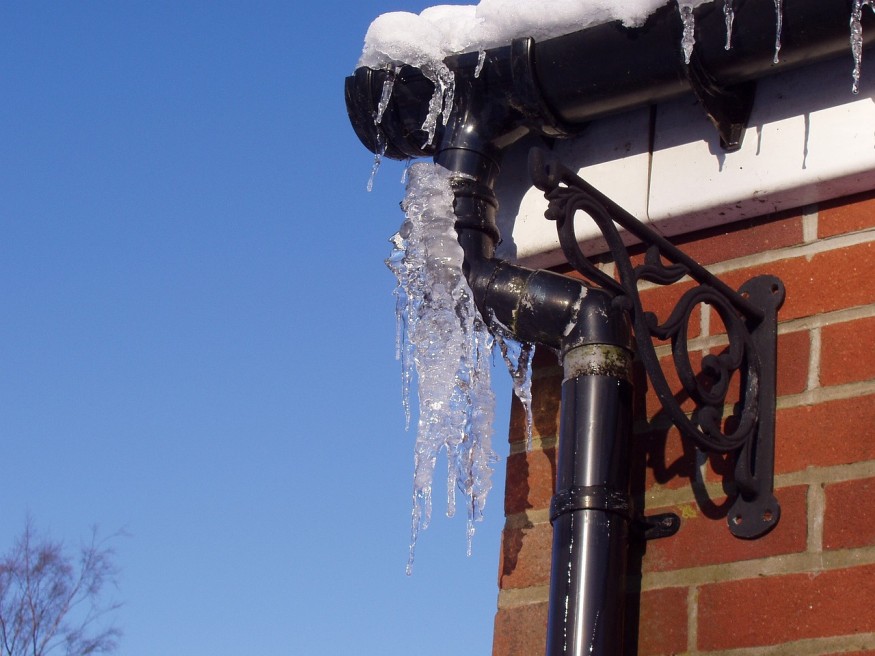Safely Thawing Frozen Pipes: A Step-by-Step Guide

Winter's chill can bring about unexpected challenges, and one common woe is the freezing of household pipes. Frozen pipes can lead to inconvenience and potential damage if not addressed promptly. Fortunately, defrosting frozen pipes is doable with some preparation and caution. We'll take you step-by-step through this instruction on properly defrosting frozen pipes and get your home's water flowing again.
Frozen Pipes: Why Are They Dangerous?
Frozen pipes occur when water inside a plumbing system freezes due to exposure to extremely cold temperatures. Wintertime is when this occurrence occurs most frequently, especially in areas where temperatures frequently fall below freezing. Water expands as it freezes, and this expansion can put a great deal of pressure on the pipe walls.
The danger lies in the potential consequences of this pressure. Here's why frozen pipes are considered hazardous:
1. Blockage of Water Flow:
An ice blockage that slows or stops water flow is created when water in a pipe freezes. This results in, at most, a drop in water pressure and, in extreme circumstances, a total cessation of water flow.
2. Pipe Bursting:
The possibility of a frozen pipe bursting is the most dangerous risk connected with them. Water expands and freezes inside the pipe, applying pressure to the walls of the pipe. When the ice thaws, excessive pressure could burst the pipe and cause water to escape.
3. Property Damage:
A burst pipe can lead to significant property damage. Water leakage, even from a small crack, can cause structural damage to walls, ceilings, and floors. Additionally, water damage can lead to mold growth, further complicating the restoration process.
4. Disruption of Water Supply:
Frozen pipes can disrupt the normal functioning of your plumbing system, leaving you without access to essential water services. This inconvenience can affect daily cooking, cleaning, and personal hygiene.
5. Financial Costs:
Repairing the damage caused by frozen pipes can incur substantial financial costs. The expenses may include plumbing repairs, water damage restoration, and potentially even replacement of damaged belongings.
6. Inconvenience and Discomfort:
Dealing with frozen pipes can be a major inconvenience. Your normal routine may be disturbed, and you may experience stress while trying to find a solution. In severe circumstances, a shortage of water supplies may cause discomfort and health issues.
Preventive actions are essential to reduce the risks connected with frozen pipes. These actions include insulating pipes, keeping the temperature sufficiently high, and knowing safe ways to thaw pipes when necessary.
Timely action and awareness can help homeowners avoid frozen pipes' potential hazards and headaches during cold weather.
How To Thaw Frozen Pipes
Step 1: Identify the Frozen Section:
Experts know that finding the frozen pipe piece is the first step. Reduced water flow or, in severe situations, no water flowing out of the faucet indicates that a pipe has frozen. Check all faucets in your home to pinpoint the affected area.
Step 2: Open Faucets:
Open the impacted faucet and any others attached to the same water line before starting the thawing procedure. This prevents pressure from building up inside the pipes and allows water to flow freely after clearing the ice blockage.
Step 3: Apply Heat:
There are several safe methods to apply heat to the frozen pipe:
a. Hair Dryer: Use a hair dryer on the low heat setting to warm the pipe gently. Move the dryer back and forth along the frozen section until water starts to flow.
b. Towels Soaked in Hot Water: Soak towels in hot water and wrap them around the frozen pipe. Replace the towels as they cool down, continuing until the pipe is thawed.
c. Electric Heating Pad: The frozen pipe can be wrapped in an electric heating pad if available. Make sure the place doesn't overheat by constantly checking on it.
Step 4: NEVER Use Open Flames:
Avoid using open flames, such as blowtorches or propane heaters, to thaw pipes. These methods can cause damage, create fire hazards, and pose serious safety risks.
Step 5: Check for Leaks:
Check for leaks when the pipe has successfully thawed before turning off the faucets. Turn off the water supply and seek help from a qualified plumber if you see any leaks.
Preventative Measures
Take into account the following safety measures to avoid pipes freezing in the future:
Insulate Pipes: To keep exposed pipes safe from freezing temperatures, especially those in unheated places, insulate them.
Maintain Adequate Heat: Keep your house sufficiently heated to avoid frozen pipes even when you're not home.
Allow Faucets to Drip: On freezing nights, allow faucets to drip slowly to keep water flowing and prevent freezing.
Thawing frozen pipes is a task that can be accomplished with care and the right approach. You can protect your property from the inconvenience and possible damage caused by frozen pipes by locating the frozen part, administering heat safely, and taking preventative action. Ask a plumber for professional assistance if you have questions or problems.
From Digital Models to 3D-Printed Homes: Jaspreet Kaur Lall Explains How the Innovation Changes the Construction Industry

Future Belongs to Green Construction: Sampath Kumar Paspunoori Explains One of the Key Trends in the Construction Industry

Kamala Harris' Campaign Ad Uses Iconic Visuals from Carrie Mae Weems to Connect with Voters

Historic Ancient Roman Ruins in Baalbek Remain Strong After Israeli Air Strikes; Locals Seek Cultural Protection

4 Ways to Honor Departed Loved Ones in Your Home Design










